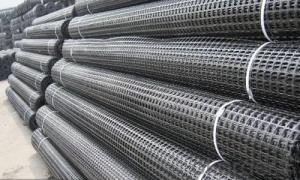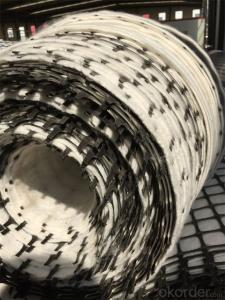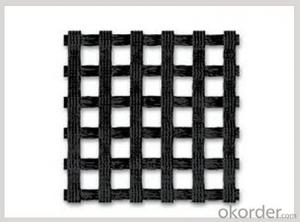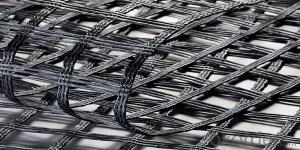Neoly Geocells Fiberglass Polypropylene Geogrid for Civil Engineering Construction
- Loading Port:
- China main port
- Payment Terms:
- TT OR LC
- Min Order Qty:
- 1000 m²
- Supply Capability:
- 1000000 m²/month
OKorder Service Pledge
OKorder Financial Service
You Might Also Like

Products Description
Slopes and subgrades with rails are a serious problem in railroad construction. Under high pressure the layers slide and deform consequently causing rail deformation, which requires closing railroad segments for a long time. Geogrid application allows carrying out comlex repair operations of the necessary road segment in shortest time (which is very essential in transportation).
Geogrid allows assembling within the temperature range from -40°C to +60°C. The material is neutral to aggressive environments and ecologically safe. Laying does not require additional machinery. In fold position geogrid does not take much place.
Type:
Geogrids
Place of Origin:
Anhui, China (Mainland)
Brand Name:
CMAX
Model Number:
Biaxial
Material:
Fiberglass
Tensile strength:
100kn
Roll Width:
3.95m
Application
1. Roadbed reinforcement in highway, railway and municipal road, prevent road surface crack
2. Reinforcement and separation in dam and river, improve soft soil bearing capacity and stability.
fiberglass geogrid/glass fiber geogrid with CE certificate Introduction: Fiberglass geogrid is a kind of new favorable earthwork base material to strengthen the road surface and roadbed. This product is composed of fiberglass filaments that are coated with an inorganic sizing agent
Our Service
Quality assurance
1.On a regular basis or as per your request,we entrust national testing agencies to conduct quality inspections
2. Strictly in accordance with the ISO9001-2008 international quality system standard,we monitor and manage the whole process throughout production,quality testing,and measurement to ensure product quality
3. For quality-related construction delay or substandard construction(except for damage or losses due to customer’s responsibility or irresistible natural disasters),we have refunding,replacement,and repair services.We will respond to customers’ feedbacks on quality issues within 24 hours.
Packaging & Shipping
Packing: PLASTIC FILM INSIDE, AND WOVEN BAG OUTSIDE
Shipping: About 15 days after receipt the deposit
FAQ:
Q: What kind of payments does jenor support?
A: T/T, L/C, Cash are accepted.
Q: Do you charge for the samples?
A: Accordeing to our company policy, the samples are free, we only charge the freight fee. And we will return the freight fee during the next order.
Q: Can you produce according to customers' design?
A: Sure, we are professional manufacturer, OEM and ODM are both welcome.
Q: Do you have other products?
A: Yes, please check the pictures:
- Q: Can geogrids be used in landfill capping systems?
- Yes, geogrids can be used in landfill capping systems. Geogrids are often used as reinforcement materials in landfill capping systems to enhance stability, prevent erosion, and provide long-term support for the capping layer. They are placed between layers of soil or other materials to improve the overall performance and effectiveness of the landfill capping system.
- Q: Can geogrids be used in reinforcement of stormwater management systems?
- Yes, geogrids can be used in the reinforcement of stormwater management systems. Geogrids are commonly used to reinforce retaining walls, slopes, and soil structures, and they can also provide reinforcement and stability to stormwater management systems such as detention ponds, infiltration basins, and bio-retention cells. By installing geogrids, the system can better withstand the forces exerted by stormwater runoff, preventing soil erosion and maintaining the overall integrity of the structure.
- Q: Can geogrids be used in coastal protection projects?
- Yes, geogrids can be used in coastal protection projects. Geogrids are commonly employed in coastal engineering to stabilize soil, prevent erosion, and enhance the stability and performance of coastal structures such as revetments, breakwaters, and seawalls. They help in reinforcing the soil, reducing wave energy, and improving the overall resilience of coastal areas against erosion and storm events. Thus, geogrids are a valuable tool in coastal protection projects.
- Q: How is a geogrid different from other geosynthetic materials?
- A geogrid is a type of geosynthetic material that differs from others due to its unique structure. Unlike geotextiles or geomembranes, which are typically made of woven or non-woven fabrics, a geogrid is composed of a grid-like pattern of polymers or metals. This grid structure provides the geogrid with exceptional tensile strength, allowing it to distribute loads more effectively and enhance soil stability. Geogrids are commonly used in applications such as reinforced soil slopes, retaining walls, and pavement systems, where their high strength and stiffness offer significant advantages over other geosynthetic materials.
- Q: Where can I do three to the geogrid test?
- There's a lot more to do. The key is where you are. See if there is a recent. The test of top breaking, puncture and tear of geotextiles.
- Q: Are geogrids suitable for use in slope reinforcement during excavation?
- Yes, geogrids are suitable for use in slope reinforcement during excavation. Geogrids are commonly used in slope stabilization and reinforcement projects due to their high tensile strength and ability to distribute loads. They can effectively prevent soil erosion and provide stability to slopes during excavation, making them a reliable choice for such applications.
- Q: Can geogrids be used in reinforcement of soil-cement mixtures?
- Yes, geogrids can be used in the reinforcement of soil-cement mixtures. Geogrids are commonly used as a reinforcement material to improve the mechanical properties and stability of soil-cement mixtures. They provide tensile strength and enhance the load-bearing capacity of the mixture, helping to prevent cracking, reduce settlement, and increase overall durability.
- Q: Are geogrids suitable for use in mechanically stabilized retaining walls?
- Yes, geogrids are suitable for use in mechanically stabilized retaining walls. Geogrids are commonly used in these types of walls to provide reinforcement and improve stability. They help distribute the loads and reduce lateral movement, enhancing the overall strength and performance of the retaining structure.
- Q: Are geogrids suitable for use in mining tailings ponds?
- Yes, geogrids are suitable for use in mining tailings ponds. Geogrids are a type of geosynthetic material that offer excellent strength and stability, making them ideal for reinforcing and stabilizing soil and other materials in various applications, including tailings ponds. They can help prevent erosion, improve drainage, and enhance the overall stability of the pond. Additionally, geogrids are resistant to chemical degradation, which is important in mining environments where tailings may contain potentially harmful substances.
- Q: What are the design considerations for geogrids in mechanically stabilized earth walls?
- The design considerations for geogrids in mechanically stabilized earth walls include factors such as the strength and stiffness of the geogrid material, the type and condition of the soil being stabilized, the required wall height and slope, the anticipated load and stability requirements, and the potential for differential settlement. Other considerations include the installation and construction methods, the compatibility of the geogrid with other wall components, and any potential environmental impacts. Overall, the design of geogrids in mechanically stabilized earth walls needs to ensure adequate stability, durability, and long-term performance of the structure.
Send your message to us
Neoly Geocells Fiberglass Polypropylene Geogrid for Civil Engineering Construction
- Loading Port:
- China main port
- Payment Terms:
- TT OR LC
- Min Order Qty:
- 1000 m²
- Supply Capability:
- 1000000 m²/month
OKorder Service Pledge
OKorder Financial Service
Similar products
Hot products
Hot Searches
Related keywords

































